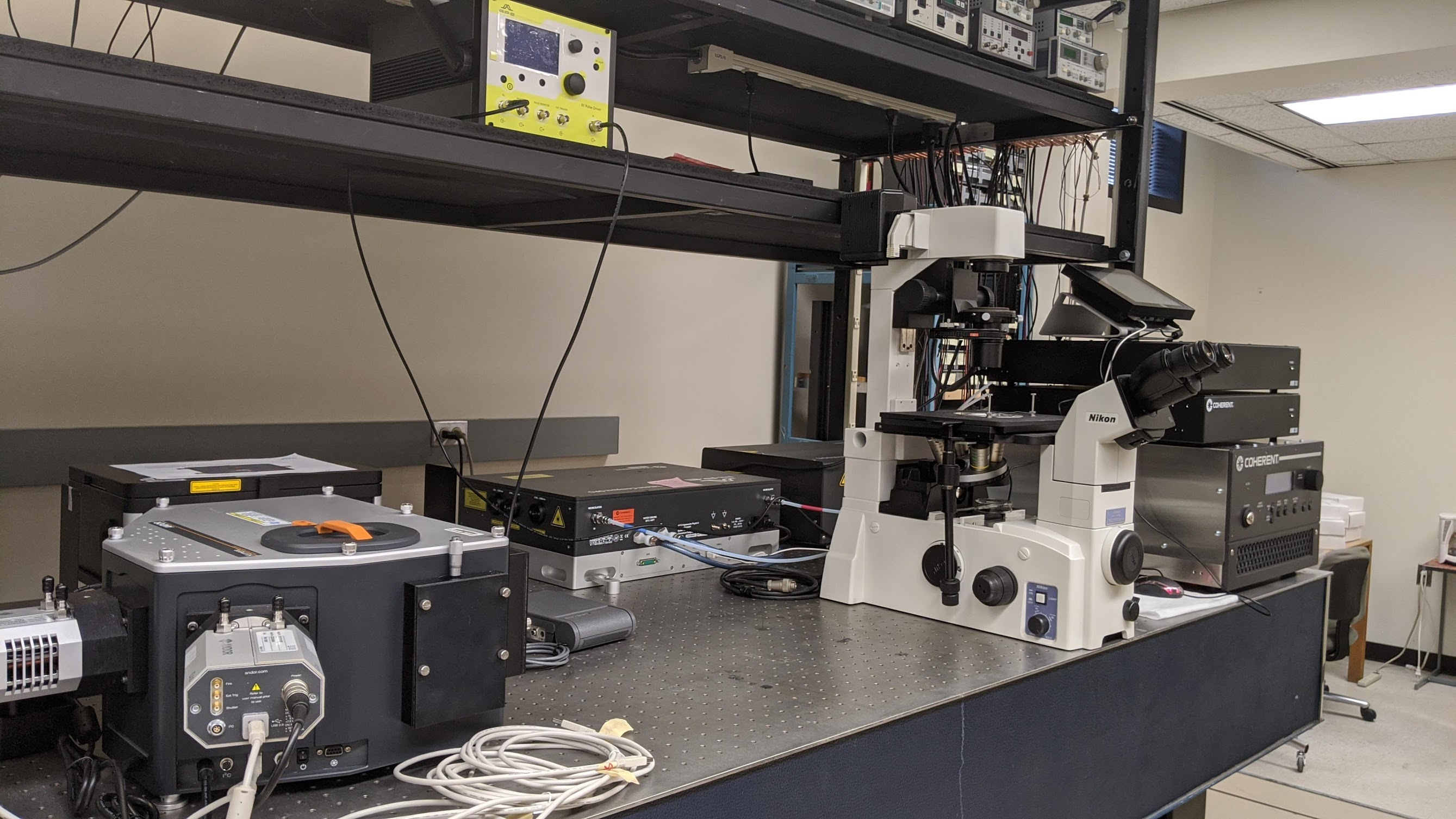Ali Safiabadi Tali: Lasers are great for cats, Star Wars duels, and. . .cellular biology!
This story was written in the spring of 2020 by GRAD 5144 (Communicating Science) student Margaret Nagai as part of an assignment to interview a classmate and write a news story about his research.
What comes to your mind when you think about lasers?
It might be the laser pointers that we use to entertain cats as they endlessly chase a red dot around the room. Or maybe the weapon of mass destruction used by the Death Star in Star Wars comes to mind. You may not think, however, about lasers as an extremely useful, high-resolution, analytical tool for cellular biology.

Ali Safiabadi Tali is a fourth year Ph.D. student at Virginia Tech who works with lasers for exactly that purpose. In his work with the electrical engineering department, Safiabadi Tali combines his love of fundamental physics and optoelectronics engineering to study the interactions of light with small metallic particles. His research focuses on designing a laser that can measure the temperature and voltage at specific locations in and on cells. Such an instrument would be extremely useful for scientists who study the biology of cells.
A laser is characterized by its singular color and non-diverging beams. As you can imagine, creating a laser is no easy process. The laser Safiabadi Tali aims to create is microscopic in size, so he has to use a dust-free and perfectly clean room to fabricate it.

Safiabadi Tali creates the laser by vaporizing silver and allowing the vapor to accumulate on an array of super-small pillars. Then, using a photodetector and some other equipment, he measures the laser output light color at different temperatures. If the laser color or intensity changes with known temperature changes, it could act as a gauge to measure the temperature at the laser spot.
However, Safiabadi Tali focuses on more than just creating lasers. Theoretical analysis of how such lasers may work is the other line of his research. He has created a model that explains the relationship between any two arbitrary components (for example, A and B) in the laser and the way A and B work together to create the laser output light. His model, called BBCMT, then describes how the relationship between A and B (and thus the laser output light) is affected by external environmental factors such as temperature. He can then use the knowledge gained by the BBCMT model to make informed decisions about how to build the laser.

For clarity, I like to compare the BBCMT model to the recent Netflix hit “Love is Blind.” In this show, the two love interests, A and B, have a relationship that is isolated in the “dating pods.” There is no third party to interfere with their relationship, and everything works well. However, once A and B leave the isolated “dating pods” and re-enter the real world, external factors, such as the economy, social media, and parents’ approval, begin to change the behavior of A and B. Ultimately, the changing of the behavior of A and B affects their relationship—just as external environmental factors such as temperature can change Safiabadi Tali’s laser output.

Safiabadi Tali emphasizes the interdisciplinary nature of his research. To conduct his research, he needs to study physics, math, electromagnetics, and electronics. He has gained skills in all of these fields that will make him very competitive in the job market. Overall, his laser research has been a journey of combining aspects of both theoretical and experimental research to create ultra-high-resolution measurement tools for cellular biology applications.




